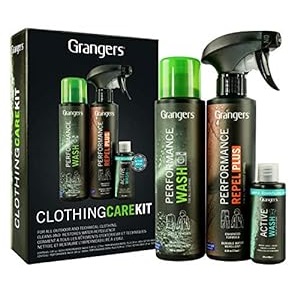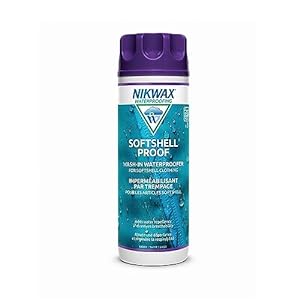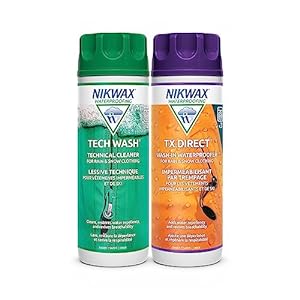The Best Way To Waterproof A Tent
A tent is more than just a piece of outdoor equipment; it’s your haven amid the wilderness, providing shelter and comfort during your adventures. However, tents can fall victim to the unpredictable forces of nature, particularly water, even the most high-quality tents. Rain, dew, and condensation can turn a cozy camping experience into a damp and uncomfortable ordeal.
In this guide, we’ll cover everything about how you can waterproof your tent. We’ll discuss various materials and sizes of tent waterproofing methods. You will learn the best waterproofing agent that will perfectly suit your tent!
Why You Should Waterproof Your Tent
There are many good reasons why you should waterproof your tent:
UV protection
If you stand in the sun unprotected, you will get sunburn. Your tent feels the same way. It doesn’t turn brown, however, but light: UV radiation bleaches the colors of the tent. With an impregnation, the tent stays beautiful; it keeps its strong colors. Thanks to the impregnation, the tent fabric also ages more slowly. The fabric remains flexible and break-proof. So you can enjoy your tent for a long time.
Rain protection
Since the tent fabric is water-resistant, it dries faster after a downpour, which is quite practical. If you pack a dry tent immediately at the campsite, you won’t need to dry it again at home. Additionally, a dry tent weighs less than a wet one, making it easier to carry.
Protection from dirt
The tent’s waterproof coating prevents dirty water and mud from seeping into the fabric. Mud splashes either roll off or can be easily wiped away with a cloth. Thanks to this coating, your tent is also better protected against acidic bird droppings. Another benefit: mold is less likely to grow since it can’t find nutrients on a clean tarp.
How to Waterproof a Small Tent

We prefer to impregnate small tents (max. 4 people) with an impregnation spray. Sprays have an excellent water-repellent effect and they are easy to use.
Which waterproofing spray do I need?

Every impregnation spray is suitable for outdoor equipment and every universal impregnation spray applies to textiles. We have had good experiences with Scotchgard Fabric Water Shield Impregnation Spray in our tents. The spray is also affordable.
How much waterproofing spray do I need?
A can with 400 ml impregnation spray is sufficient for approx. 7 square meters of tent fabric. If you don’t know exactly what size your flysheet is, then we have a simple rule of thumb for you: One can of Impregnol is enough for a 2-person tent, two cans for a 4-person tent, and three cans of impregnation spray for a 6-person tent.
Instructions:
With our instructions, you can easily re-impregnate your small tent. It’s not difficult at all, I promise! A clean 3-man tent that has already been set up takes about 20 minutes.
Get accessories
Get a suitable waterproofing spray and secure a mouth guard so you do not breathe in the spray.
Preparation
On a dry day, set up your tent outdoors and tension it to remove any folds from the tent walls. Make sure to close the zippers to prevent the waterproofing agent from getting inside. Clean off any dirt from the tent and allow it to dry completely.
Spray the tent
Check the product instructions for your spray, and apply it evenly to your tent from a distance of about 30 cm. Use smooth, sweeping, or circular motions with your forearm for even coverage. If the tent’s original waterproofing is weak, the fabric will quickly absorb the spray, but it’s unnecessary to soak the fabric completely—a thin, even layer is sufficient.
Always spray the outside of the tent, covering the entire outer fabric. There’s no need to spray windows or the tent floor, as they aren’t absorbent. Apply the spray to the entire tent in one go to prevent color variations.
Let dry
If there is any waterproofing agent on the windows, wipe it off with a cloth. Let the tent dry and air out completely so that the smell of the spray dissipates.
Test the impregnation
Test the new waterproofing by using a watering can or garden hose. If water doesn’t bead up and roll off in small droplets, apply more spray to those areas. Once the water rolls off evenly, your tent is fully waterproofed. The waterproofing lasts for 2 to 4 years with normal use or until the tent is cleaned with detergents.
How to Waterproof a Large Tent

A large tent, designed for 5 people or more, can easily cover a surface area of 20 square meters or more. Using spray cans to waterproof such a tent can be time-consuming. For larger tents, liquid waterproofing is much more efficient. With a pressure sprayer, you can apply the liquid quickly and evenly, even on difficult-to-reach areas like the tent roof.
Which impregnation agent do I need?
Liquid impregnation is available in canisters with a capacity of several liters and at reasonable prices. We treated our large tunnel tent with various impregnating agents and got along best with Grangers Outdoor Clothing Care Kit. The liquid impregnation has an environmentally friendly silicone base, protects the tent well against UV radiation, and is cheap at around 10-12 dollars per liter.

How much liquid impregnation do I need?
One liter of liquid waterproofing covers approximately 7 square meters of cotton fabric or 18 square meters of synthetic tent fabric (such as nylon or polyester). Unsure about the exact size of your tent? Here’s a simple rule of thumb: multiply the length, width, and height of your tent. This will give you an estimate of the surface area in square meters.
Instructions:
Impregnating large tents is not difficult. A clean 6-man tent that has already been set up takes about 30 minutes.
Get accessories
Get yourself a stepladder, a suitable liquid impregnation, a pressure sprayer, and the safety of a mouth guard so you do not breathe in the spray. This pressure sprayer works well.
Preparation
On a dry day, pitch the tent outside, roughly pull the creases out of the tent fabric, and close the zippers so that no waterproofing agent gets into the tent. Clean your tent of dirt and let it dry. You can reach hard-to-reach areas on the tent roof with an articulated mop.
Spray the tent
First, check the product instructions and adjust the pressure sprayer nozzle to create a fine mist. Fill the sprayer with the impregnation liquid and apply it evenly to the tent from about 30 cm away, using smooth, circular motions. Use a stepladder to reach the top of the tent. You don’t need to soak the fabric—just a full, even layer is enough. Always spray the outer tent fabric, but avoid windows and the tent floor as they don’t absorb the agent. Be sure to complete the impregnation in one go to prevent color inconsistencies.
Let dry
If there is any waterproofing agent on the windows, wipe it off with a slightly damp cloth. Let the tent dry and air out completely so that the smell of the agent goes away.
Test the impregnation
Test the impregnation with the garden hose and rework areas where the water does not roll off. Don’t forget to empty the pressure sprayer afterward and rinse it with clear water. This protects the device’s seals. The tent is now completely impregnated. The impregnation lasts for about 2 to 4 years with the normal use of the tent, or until the tent cloth is cleaned with detergents.
How to Waterproof a Cotton Tent

Good impregnation is particularly important for tents made of cotton to prevent mold stains and mold. Please note that there are some special features when impregnating cotton tents.
Which impregnation agent do I need?
Cotton is a breathable natural fiber. The tent fabric is natural and sustainable. That is why we recommend using a water-based agent to impregnate cotton tents. Nikwax Cotton Proof is free from solvent-based aerosols and harmful volatile organic compounds. Additionally, it does not contain any fluorocarbons that contribute to greenhouse gas emissions.

How much waterproofing agent do I need for a cotton tent?
It depends on how big your tent is and how thick the fabric is. We use around 100 ml of impregnation agent for 6 square meters of tent fabric. Again, multiply the length x width x height of your tent. You get roughly the surface in square meters.
Instructions:
Cotton tents should also be impregnated on the inside to protect them from mildew and mold.
Get accessories
Get a suitable water-based waterproofing agent such as Nikwax Cotton Proof and a sponge or large brush.
Preparation
Clean your tent of any dirt; it doesn’t need to dry afterward. Set up the tent outdoors and smooth out any folds in the fabric. If you want to avoid getting impregnating agent on your hands, be sure to wear gloves now.
Apply the agent
Mix Nikwax Cotton Proof with lukewarm water in a 1:9 ratio and stir well. Apply the diluted solution to the outside of the cotton tent using a sponge; for larger tents, a pressure sprayer can help reach the roof. Ensure the solution fully soaks the cotton fabric, including the inside of the tent walls. If you notice any areas with excess waterproofing agent, wipe them off with a damp cloth. It’s important to impregnate the entire tent in one go to avoid stains, and if any solution lands on the windows, remove it with a damp cloth.
Let dry & Test impregnation
Allow the cotton tent to dry completely. This activates the waterproofing agent and eliminates any odor. After drying, test the new waterproofing with a watering can or garden hose. If you notice areas where water doesn’t bead up into small droplets, apply additional waterproofing to those spots.
How to Waterproof the Pavilion

To protect a pavilion’s roof from sun and rain, it’s essential to apply waterproofing. For standard-sized pavilions, you can easily use a stepladder along with a pressure sprayer or mop. However, for larger pavilions with diameters over 4.5 meters, reaching the center can be challenging. In such cases, wash-in impregnation is an effective solution.
Which tent impregnation do I need?
You will need a water-based impregnation agent to wash it in. We like to treat pavilions made of synthetic fibers polyester and nylon with Nikwax TX.DIRECT. Nikwax COTTON PROOF is suitable for a cotton or polycotton gazebo. It is free from volatile organic compounds & fluorocarbons, and reasonably affordable.

How much waterproofing agent do I need for a pavilion?
It depends on how big your gazebo is and how much space it needs in the tub. We use around 100 ml of impregnating agent for 10 liters of water.
Instructions:
You need about 30 minutes for the impregnation. It is also important that the pavilion is dried thoroughly before packing it away.
Get accessories
Get a suitable water-based waterproofing agent such as Nikwax TX.DIRECT and a tub that can accommodate your pavilion.
Preparation
Clean your tent from dirt. Fill a tub with lukewarm water and add the waterproofing agent. 100 ml of agent added to 10 liters of water will be mixed well. You don’t want to impregnate your hand? Now is the best time to put on gloves.
Wash the gazebo
Place your gazebo in the tub and let it soak for a few minutes. Afterward, gently agitate the fabric with your hands and soak it again for a few minutes. Overall, the gazebo should remain in the tub for about 15 minutes. Finally, rinse the gazebo until the water runs clear.
Let dry & Test the impregnation
Thoroughly dry the gazebo. The impregnating agent develops its water-repellent properties and its odor disappears. Test the new waterproofing with a garden hose. If the water has not yet run off the pavilion in small drops in all places, you can repeat the wash a second time.
How to Waterproof the Awning

Awnings are often set up longer than camping tents. They are relatively expensive. That is why good protection from the sun and moisture is important to protect your tent from mold, mildew stains, and material embrittlement. Besides the outside of our awning, we also impregnate critical areas inside the tent. Critical areas are areas that are exposed to moisture over a long period. This can happen especially in the corners and near the floor.
Which impregnation agent do I need?
Due to the large surface area of an awning, small spray cans are impractical. Instead, using liquid tent impregnation available in larger containers of at least one liter is more efficient. This approach can save you both time and money.
Grangers’ Outdoor Clothing Care Kit is ideal for awnings made of synthetic fibers polyester and nylon. For an awning made of cotton or polycotton, we use Nikwax COTTON PROOF. We fill both impregnation agents into a pressure sprayer with an arm so that we can easily reach the roof of the awning.

Instructions:
It is best to waterproof your awning on a dry, windless day when the sun is not too strong.
Get accessories
Get yourself a suitable liquid impregnation, a pressure sprayer, and the safety of a mouth guard so you do not breathe in the spray. This pressure sprayer works well. You also need a stepladder and a mop.
Preparation
Set up the awning, roughly pull the folds out of the tent cloth, and close the zippers so that no waterproofing agent gets into the tent. Clean your awning from dirt and let it dry. You can reach hard-to-reach areas on the tent roof with an articulated mop.
Spray the tent
First, check the product instructions for your impregnation agent and pour it into the pressure sprayer, diluting it if necessary. Adjust the nozzle to create fine droplets. From about 30 cm away, apply the liquid impregnation evenly and generously to the awning, ensuring the outside is well covered; a stepladder may be needed to reach the roof.
For cotton fabric, ensure it is completely soaked with the waterproofing agent, while a full, even layer is sufficient for synthetic materials like polyester or nylon. If you notice any areas with excess waterproofing, wipe them off with a damp mop. The windows do not need to be treated, but if any impregnation agent gets on them, clean it off with a damp cloth.
Next, focus on impregnating critical areas on the inside of the awning, especially those exposed to moisture, such as areas prone to soil moisture or condensation during camping. It’s important to impregnate the entire awning in one go to avoid color differences after application.
Let dry & Test the impregnation
With the door open, you can allow the awning to dry completely and air it out so that the smell of the remedy disappears. Test the impregnation with the garden hose and rework areas where the water does not roll off. The model is nature: Plants protect themselves with a water-repellent surface so that they can breathe and do not become too heavy.
Conclusion
Regular maintenance and re-application of waterproofing treatments are key to prolonging the life of your tent and ensuring it continues to provide reliable protection from harsh weather. For nylon tents, a silicone-based waterproofing spray works wonders. It creates a durable barrier that repels water while maintaining breathability. Canvas tents, on the other hand, benefit from wax-based treatments because they provide a robust waterproof seal that can withstand the elements.
When dealing with larger tents, pay extra attention to seams, zippers, and any potential weak points. Seam sealers are invaluable to prevent water from seeping through stitched areas. Also, applying a water repellent to the rainfly and groundsheet adds an extra layer of protection.
Always ensure that the tent is clean and dry before applying any waterproofing treatment. This ensures the product adheres properly and provides maximum effectiveness.
Frequently Asked Questions
Does a new tent have to be impregnated?
The tent doesn’t need to be impregnated right after purchase, as the manufacturer has already treated it. However, over time, exposure to sun, wind, and rain will wear away the waterproofing agent.
How often do I have to re-impregnate my tent?
How often you should re-waterproof your tent depends on its usage. A tent that’s set up on a windy beach in Spain for four weeks in summer will need more waterproofing than one used for a weekend under a tree in the shade. We recommend re-impregnating frequently used tents every two years, while occasionally used tents can be treated every three years. Always re-treat your tent after washing it, as cleaning agents can strip away the waterproofing. Don’t wait until the fabric becomes faded and brittle to impregnate it—once it reaches that point, the damage is irreversible.
Can I waterproof all types of tents?
Yes, you can waterproof most types of tents regardless of their material. Nylon, polyester, canvas, and other common tent fabrics can all benefit from waterproofing treatments. However, make sure to choose a waterproofing product that is compatible with the specific material of your tent. For instance, silicone-based sprays work well for nylon and polyester, while wax-based treatments are suitable for canvas.
When is the best time to impregnate?
When re-waterproofing your tent, ensure it is dry, and if using a spray, choose a reasonably calm day without strong winds. Avoid applying waterproofing in direct sunlight, as it can dry the agent too quickly. We recommend waterproofing our tents in spring, just before the new camping season begins.
What do I have to do before the tent impregnation?
To ensure the waterproofing agent penetrates the tent fabric effectively, your tent should be clean, dust-free, and grease-free. Rinse off any leftover detergent with plenty of clean water. For thorough cleaning, you can follow our detailed instructions.
How long does the impregnation take and what does it cost?
It depends on the size of your tent and the waterproofing agent used. For a small igloo tent, we usually need about 20 minutes. With our large motorhome awning, it can take 1 hour. The cost of the impregnation agent is between 5 and 30 dollars.
Theoretically, you can use wash-in impregnations in a washing machine, as they are easy to use, but the water-repellent effect is often not ideal. Also, tents have sensitive coatings and zippers that could be damaged in the washing machine. The exception is cotton tents, which can typically withstand machine washing at 30 to 40 degrees without damage; however, high temperatures may cause them to shrink, similar to a cotton T-shirt. Since most cotton tents are too large and heavy for a standard washing machine, we recommend using liquid impregnation instead.
Impregnating agents often have a strong odor that can linger in a room for several days, especially if there are issues with the waterproofing. Propellant-based sprays can create an explosive mixture with the propellant, posing a risk if used in an enclosed space where the spray concentration is high. Furthermore, inhaling large amounts of waterproofing sprays can be potentially hazardous to health.
Liquid impregnation can leave white stains when it drips onto surfaces and dries, which may look fine on grass but can be unsightly on your carpet.
While tent impregnation helps maintain waterproofing, it’s not its main function; the tent is primarily waterproof due to its polyurethane or silicone coating. Cotton also offers natural water resistance by swelling with moisture to close gaps between fabric threads.
Impregnation can seal micro-cracks in the coating and small fabric defects, preventing water seepage during prolonged rain. However, if there are leaks from a seam or tear, you’ll need repair patches or seam sealers. Regular impregnation protects the fabric and coating, extending the tent’s waterproof properties.
Yes. motorhome or RV awnings are usually made of synthetic fibers or cotton. That is why they should also be impregnated regularly. If the surface is dirty, it must be cleaned before impregnation. You can ideally clean awnings with our instructions for cleaning awnings.
No, you do not need to impregnate the tent floor, as it serves little purpose. After heavy rain, water may collect under the tent, but the tent floor is typically thickly coated, preventing water from entering from below. Additionally, waterproofing spray does not adhere well to the non-absorbent surface of the tent floor and can quickly wear off due to contact with grass and dirt.
No, the opposite is the case! A non-impregnated cotton tent soaks up a lot of water in damp weather. The water blocks the exchange of air. That is why it is important to maintain the water-repellent properties of the tent fabric for a good climate in the tent.
Yes, some laundries and dry cleaners offer tent impregnation services. It’s best to inquire directly at these locations. Local youth organizations that run tent camps often have valuable knowledge in tent maintenance and may be willing to impregnate your tent for a donation or a fee.
Although home remedies like shoe spray, laundry wax, baby oil, and butter provide some water protection for tents, we generally advise against their use for several reasons. Health considerations are crucial since you’ll be spending a lot of time in the tent. These remedies have not been tested for compatibility with tent fabrics and lack the durability needed, as tents endure much longer exposure to rain and sunlight than typical items like shoes. Instead, we recommend using specially formulated impregnating agents designed to meet the specific requirements of tent materials.
Yes, you can use acetic acid clay (aluminum diacetate) for impregnating cotton tents or those with a high cotton content. To do this, mix about 2-3% acetic acid clay in warm water and soak your tent in the solution for 30 minutes. During this time, gently knead the tent several times, then hang it up to dry.






